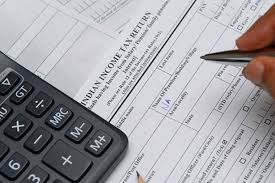As responsible citizens, we pay our taxes every year and therefore it is essential for us to know the details of taxes which have been deducted under various heads. For this purpose, Form 26AS comes in handy.
Let us find out what is this form and how is it useful.
What is form 26AS?
Form 26AS is a consolidated annual tax statement that shows the details of tax deducted at source, tax collected at source, advance tax paid by the assessee along with self-assessment tax. This information is specific to a Permanent Account Number (PAN).
Read More:-Sensex, Nifty Extend Gains For Third Day; Tech, Metal Stocks Shine
The form also shows details of sale/purchase of immovable property, mutual funds, cash deposits or withdrawal from savings account etc. An assessee can claim the tax deducted reflecting in their form 26AS while filing their income tax return for a financial year.
What are the components of Form 26AS?
Before you file your income tax return, the assessee must make sure that data related to tax deducted at source as reflected as per Income Tax Department is correct and accurate. This can be done by referring to Form 26AS. This form can be downloaded from the income tax website.
Given below are the contents of Form 26AS:
Tax deducted at source (TDS)
Tax collected at source(TCS)
Details of advance tax, self-assessment tax paid
Information about income tax refund
Read More:-Tata Consumer Products Board Approves Dividend, Says Significant Progress Made on Supply Network
Details of tax deducted on the sale of immovable property
Let’s break down the components of Form 26AS:
Part A – Details of Tax deducted at source:
This part shows the tax deducted by tax deductor for your PAN. The tax deductor files their TDS return on a quarterly basis post which it will reflect in form 26AS. This part contains the following details:
Name of the deductor
TAN of deductor
The sum of amount paid/credited
Total tax deducted
The Total tax deposited against the assessee’s PAN
Part A1- Details of Tax Deducted at Source for Form 15G/ Form 15H:
Read More:-Zomato Acquires Blinkit In A Share Swap Deal; Should you Buy, Sell or Hold Stocks?
This part contains details of income on which no TDS has been deducted as the taxpayer has submitted Form 15G or 15H. If you have not submitted Form 15G or Form 15H, this section will display ‘No transactions present’.
Part A2 – Details of tax deducted on sale of an immovable property:
This part contains details of tax deducted on immovable property, if any, sold by the assessee during the financial year. If there is a sale of an immovable property during the previous year and the buyer has deducted tax on the proceeds of sale, the tax deducted will be reflected in this section.
Part B – Details of tax collected at source:
This part contains details of tax collected at source (TCS) by a seller of specified goods at the time these goods have been purchased by the assessee. It also reflects the details of the seller as below:
Name of the collector
TAN of the collector
Total amount paid
The Total tax collected
Total TCS deposited
Part C – Details of tax deducted (other than TDS & TCS)
This part shows the details of tax paid by the assessee such as advance tax, self-assessment tax and the challan details through which the payment has been made.
Part D – Details of refund paid:
This part reflects the details of tax refunded by the department to the assessee. It shows the below details:
Assessment year
Mode of payment
Refund issued
Nature of refund
Amount of refund
Interest paid
Date of payment
Remarks
Part E – details of SFT transaction:
This part shows the details of any high value transactions which ‘specified persons’ like a banking company, mutual funds etc. are required to report. The SFT was earlier known as Annual Information Return (AIR).
Part F – Details of Tax Deducted on Sale of Immovable Property u/s 194IA (For Buyer):
This part will show details of any TDS deducted by you while buying a property. Also, it displays TDS deposited by you to the bank.
Part G – TDS Defaults (Processing of Defaults):
Defaults relating to the processing of statements are mentioned here. They do not include demands raised by assessing officers.





































